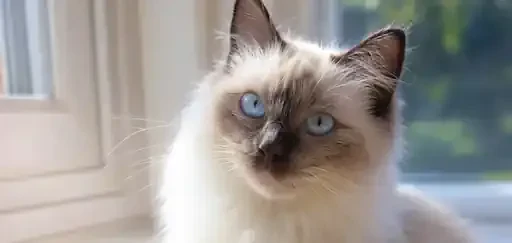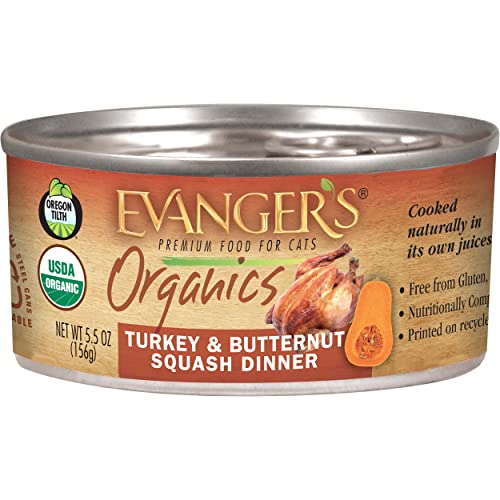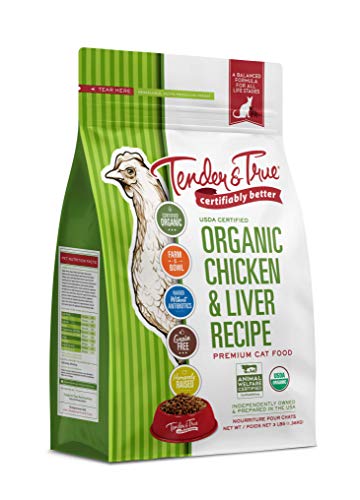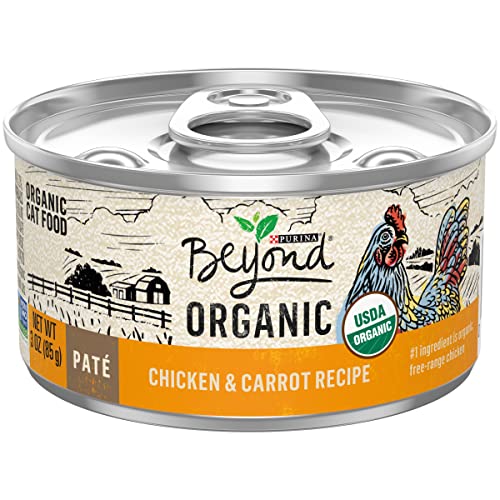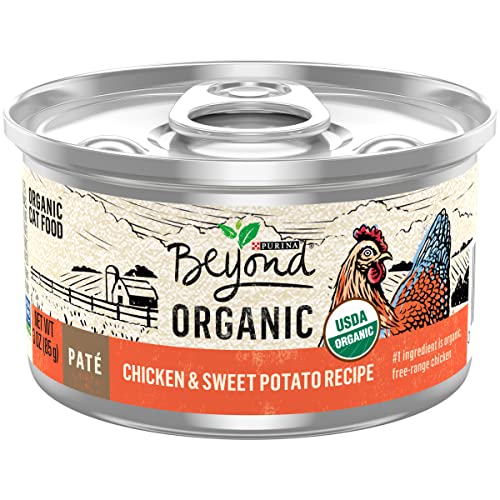Prepare to fall in love with the ‘gentle giants’ of the cat world – Ragdolls! These captivating felines, renowned for their striking good looks and remarkably docile temperament, have charmed their way into homes and hearts around the globe. If you've ever been captivated by a cat with mesmerizing blue eyes and a luxuriously soft coat, chances are you've already encountered the enchanting Ragdoll. This breed isn't just about stunning aesthetics; it embodies a gentle, affectionate spirit that makes it a truly exceptional companion. This article serves as your complete guide, a comprehensive exploration into the wonderful world of Ragdolls, designed for anyone eager to learn about or considering welcoming one of these beloved cats into their life. We'll delve into every facet of this fascinating breed, uncovering the secrets to their irresistible charm and providing you with the knowledge you need to truly appreciate and perhaps even care for a Ragdoll of your own.
So, what exactly defines a Ragdoll cat? To truly understand this breed, we need to journey back to their origins, to the captivating story of Ann Baker and Josephine. It all began in the 1960s in sunny California with a striking white, semi-feral longhaired cat named Josephine. Josephine, owned by Ann Baker, was known for her placid temperament and striking beauty. After Josephine sustained an injury, the story goes that her subsequent litters exhibited an unusually relaxed and docile nature, famously going limp when held, much like a rag doll – hence the breed's evocative name. Ann Baker, recognizing the unique qualities of these kittens, embarked on a mission to selectively breed them, carefully nurturing and refining the traits that would come to define the Ragdoll breed. From Josephine, Baker developed a foundation stock, carefully selecting for specific physical characteristics and, most importantly, the breed’s signature gentle temperament. She established the Raggedy Ann Cattery, the very birthplace of the Ragdoll, and meticulously controlled the breed's early development, even creating her own breed registry, the International Ragdoll Cat Association (IRCA). The early days of Ragdoll breeding were marked by Baker’s rather unconventional and tightly controlled approach, which ultimately contributed to some divisions within the Ragdoll fancy. However, despite these early complexities, the Ragdoll breed steadily gained recognition and popularity, spreading beyond California and eventually captivating cat lovers worldwide. Today, the Ragdoll is recognized by all major cat registries, a testament to the enduring appeal and unique characteristics that Ann Baker first identified and nurtured.
Physically, Ragdolls are undeniably impressive. Often described as "gentle giants," their size certainly contributes to this moniker. They are a large breed, with males typically weighing between 15 to 20 pounds or even more, and females slightly smaller, generally ranging from 10 to 15 pounds. Their build is sturdy and muscular, yet elegant, contributing to their overall graceful presence. Adding to their allure is their magnificent semi-longhaired coat, a luxurious cascade of silky fur that frames their body. This coat is one of their most distinguishing features, contributing significantly to their regal appearance. The Ragdoll coat is categorized as semi-longhair, characterized by its soft, silky texture that feels almost rabbit-like to the touch. While it’s undeniably luxurious, it's also surprisingly less prone to matting than some other long-haired breeds, a welcome feature for potential owners. However, despite being relatively low-maintenance for a long-haired cat, regular grooming is still essential to keep their coats looking their best and to minimize shedding.
The defining characteristic of the Ragdoll's coat pattern is the pointed pattern, a striking contrast where the body is lighter in color and the ‘points’ – the ears, mask, legs, and tail – are darker. Within this pointed pattern, a spectrum of colors unfolds, each contributing to the breed's captivating beauty. Seal point Ragdolls display a warm, creamy body with deep, dark brown points. Blue points offer a cooler palette with a bluish-white body and slate grey points. Chocolate and Lilac points introduce softer variations; Chocolate displaying a creamy ivory body with milk chocolate points, and Lilac presenting a glacial white body with delicate pinkish-grey points. For those who prefer warmer hues, Red or Flame points showcase a creamy white body with fiery orange-red points, while Cream points offer a softer, diluted version of red, presenting a creamy white body with pale cream points. Beyond color, patterns further diversify the Ragdoll’s appearance. The Colorpoint pattern is the classic pointed presentation, with clear contrast between body and points. Mitted Ragdolls are similar to colorpoints but possess white ‘mitts’ on their front paws and white ‘boots’ on their back legs, along with a white chin and often a white blaze on the nose. Bicolor Ragdolls are perhaps the most striking, with inverted ‘V’ markings on their mask, white legs, and a white underside, adding a dramatic flair to their pointed pattern. Regardless of color or pattern, all Ragdolls share certain distinctive features that contribute to their unique and recognizable appearance. Perhaps the most captivating is their bright blue eyes. While the most common and sought-after eye color is a vivid, sapphire blue, some variations can occur, ranging from lighter to deeper shades of blue. Their tails are another noteworthy feature, often described as plume-like, bushy and flowing, adding to their overall elegance. Finally, their soft facial expressions, often described as sweet and gentle, perfectly mirror their inner temperament, completing the picture of this truly beloved breed.
But beyond their striking physical attributes, it is the Ragdoll personality that truly captures hearts and solidifies their place as beloved companions. Their temperament is the cornerstone of their breed description, the very essence that makes them so special. At the heart of the Ragdoll personality lies their gentle and docile nature, the very trait that gave them their name. The famous "ragdoll" trait, the tendency to go completely limp and relaxed when held, is not just a charming anecdote; it reflects their overall calm and trusting disposition. They are known for their relaxed demeanor, often described as being more like a cuddly toy than a typical feline. This gentle nature extends to their interactions with children and other pets, making them exceptional family companions. They are generally known to be good with children, patiently tolerating the sometimes enthusiastic affections of youngsters. Their easygoing nature also makes them well-suited to households with other pets, including dogs and other cats, often forming peaceful and even affectionate bonds.
Ragdolls are often described as possessing "dog-like" qualities, a testament to their unique blend of feline grace and canine-esque loyalty and devotion. Unlike some more aloof cat breeds, Ragdolls often forge incredibly strong bonds with their human families, displaying behaviors more commonly associated with dogs. They are known to follow their owners from room to room, always eager to be in close proximity. Many Ragdoll owners are greeted at the door upon returning home, a heartwarming welcome often reserved for canine companions. Furthermore, Ragdolls are surprisingly playful and can even be trained to perform dog-like tricks, such as fetching. This combination of playfulness and trainability further contributes to their "dog-like" persona, making them exceptionally engaging and interactive companions. Their loyalty and devotion are truly remarkable; they are deeply invested in their human families and thrive on companionship, becoming integral members of the household.
Affection and sociability are deeply ingrained in the Ragdoll character. They are cats who genuinely crave attention and affection, actively seeking out interaction with their owners. They adore being petted, often purring contentedly as they are stroked and cuddled. They are quintessential lap cats, happily settling onto laps for extended cuddle sessions, radiating warmth and contentment. Ragdolls are not overly independent creatures; they thrive on being with their people and can become quite distressed if left alone for prolonged periods. This need for companionship underscores their social nature and highlights their suitability for owners who are home often and can provide them with the interaction they crave. Interestingly, despite their affectionate and engaging personalities, Ragdolls are generally known for being relatively quiet cats, not overly vocal unless they have a specific need, such as wanting food or attention. This quiet demeanor makes them particularly well-suited to apartment living and households seeking a peaceful feline companion. However, despite their gentle and calm nature, Ragdolls retain a playful spirit and possess a keen intelligence. They enjoy playtime and require mental stimulation to stay happy and engaged. Providing them with toys, puzzle feeders, and opportunities for interactive play is essential to keep their minds sharp and their bodies active. This blend of gentleness, intelligence, and playfulness creates a truly captivating and well-rounded feline companion.
Considering bringing a Ragdoll into your life? It's essential to weigh the pros and cons to determine if this breed is the right fit for your lifestyle and expectations. The advantages of Ragdoll ownership are numerous and compelling, starting with their exceptional personality traits. Their gentle and affectionate nature makes them ideal companions for families, seniors, and individuals alike. Their renowned patience and tolerance make them wonderful family pets, generally getting along famously with children of all ages. Their easygoing nature and sociability also extend to other pets, making them harmonious additions to multi-pet households. Compared to some other long-haired breeds, Ragdolls are relatively low-maintenance when it comes to grooming. While regular brushing is essential, their coat's texture is less prone to matting, simplifying grooming routines. Of course, their beautiful appearance is undeniably a major draw. Their striking blue eyes and luxurious coats make them visually stunning cats, a constant source of admiration and delight. Their adaptability to indoor living and apartment settings is another significant advantage. Their calm and relatively inactive nature indoors means they are perfectly content in smaller living spaces, thriving as indoor-only companions.
However, responsible ownership requires acknowledging the potential downsides as well. While their grooming needs are lower than some, regular brushing is still a non-negotiable aspect of Ragdoll care. Consistent grooming, ideally 2-3 times a week, is necessary to prevent hairballs and keep their coats healthy and tangle-free. Like many breeds, Ragdolls are predisposed to certain health issues, most notably Hypertrophic Cardiomyopathy (HCM) and Polycystic Kidney Disease (PKD). It's crucial to be aware of these potential health concerns and to seek out reputable breeders who health test their cats to minimize the risk. Their social nature, while endearing, can also be a consideration. Ragdolls can be quite demanding of attention, thriving on interaction and becoming lonely if left alone for extended periods. They are not independent cats who will happily entertain themselves for hours on end; they need and crave human companionship. If you are seeking a highly independent feline who prefers solitude, a Ragdoll might not be the ideal choice. Finally, the cost of acquiring a Ragdoll, particularly from reputable breeders, can be higher compared to some other breeds or mixed-breed cats. The initial purchase price should be factored into your budget, along with ongoing costs of care.
Ultimately, lifestyle compatibility is a key factor in determining if a Ragdoll is right for you. They are ideally suited for families seeking a loving and interactive pet, seniors looking for a gentle and affectionate companion, and individuals who desire a devoted feline friend. Their calm indoor nature makes them well-suited for apartment living and for those who prefer indoor-only cats. Before welcoming a Ragdoll, carefully consider if your lifestyle can accommodate their need for attention and interaction. If you can provide them with the love, care, and companionship they crave, a Ragdoll can be an incredibly rewarding and enriching addition to your life.
Caring for a Ragdoll, while generally straightforward, involves understanding their specific needs to ensure their health and happiness. Grooming is a vital aspect of Ragdoll care. While their semi-longhaired coats are less prone to matting than some, regular brushing is still essential. Aim to brush your Ragdoll 2-3 times a week to remove loose hair, prevent tangles, and minimize hairballs. A slicker brush and a metal comb are ideal tools for Ragdoll grooming, effectively removing loose fur and smoothing their silky coats. Bathing is less frequent for Ragdolls and should only be done as needed, perhaps a few times a year or when they become particularly dirty. Regular nail trimming is crucial for all indoor cats, including Ragdolls, to prevent overgrowth and scratching. Ear cleaning should be done periodically to remove any wax buildup and prevent infections.
Feeding and nutrition play a crucial role in maintaining your Ragdoll's health and well-being. Provide them with high-quality cat food, opting for formulas that are appropriate for their life stage (kitten, adult, senior). Both wet and dry food can be incorporated into their diet, offering a balance of hydration and dental benefits. Portion control is essential for Ragdolls as they can be prone to weight gain if overfed. Monitor their food intake and adjust portions to maintain a healthy weight. Ensure fresh, clean water is always available to keep them properly hydrated. Exercise and play are just as important for indoor Ragdolls as they are for any cat. Despite their calm nature, Ragdolls need daily playtime to stay physically and mentally stimulated. Provide them with a variety of toys, scratching posts, and cat trees to encourage activity and enrichment. Interactive play with owners is particularly important for Ragdolls, strengthening your bond and providing them with the social interaction they crave.
Regular health care is paramount for Ragdolls. Schedule regular veterinary check-ups and vaccinations to ensure their overall health and well-being. Parasite prevention is essential, including flea, tick, and worm control, as recommended by your veterinarian. Dental care should not be overlooked. Regular teeth brushing, ideally daily, and dental treats can help maintain their dental health and prevent dental disease. Be aware of breed-specific health concerns, particularly HCM and PKD. Discuss these conditions with your veterinarian and inquire about screening options. Choosing a reputable breeder who screens their cats for these conditions can significantly reduce the risk. Creating a Ragdoll-friendly home environment is the final piece of the puzzle. Provide them with a safe indoor space, free from hazards and potential dangers. Ensure comfortable bedding and resting spots are available throughout the house where they can relax and feel secure. Litter box placement and hygiene are crucial; provide enough litter boxes in accessible locations and scoop them daily to maintain cleanliness. Scratching posts and enrichment opportunities, such as window perches and interactive toys, should be readily available to keep them entertained and stimulated.
When you're ready to welcome a Ragdoll into your life, deciding where to find your new companion is a crucial step. You have options, including reputable breeders, shelters, and rescues, each with its own pros and cons. Choosing a reputable breeder offers the advantage of knowing the kitten's lineage and health history. Reputable breeders prioritize responsible breeding practices, health testing their breeding cats for genetic conditions like HCM and PKD. They also focus on temperament and socialization, raising kittens in a nurturing environment. However, kittens from reputable breeders typically come with a higher purchase price. Shelters and rescues offer a wonderful opportunity to give a Ragdoll or Ragdoll mix a loving home. Adoption fees are generally lower than breeder prices, and you are providing a home to a cat in need. However, shelter cats may have unknown health histories or temperaments, and finding a purebred Ragdoll in a shelter can be less common. When choosing a breeder, prioritize responsible breeding practices and health testing. A reputable breeder will be transparent about their breeding practices, happy to answer your questions, and allow you to visit their cattery (if possible). Encourage considering adoption as a first option; you might find a Ragdoll mix or even a purebred Ragdoll in need of a loving home.
When contacting breeders, be prepared to ask questions. Inquire about health testing of parents, specifically for HCM and PKD. Ask about the temperament and socialization of kittens, ensuring they are raised in a loving home environment. Ask about the living environment of the kittens, ensuring it is clean and enriching. Inquire about breeder guarantees and support they offer after you take your kitten home. If possible, visit the cattery to observe the living conditions and meet the kittens and their parents. Be aware of red flags. Avoid breeders who do not health test their cats or are unwilling to provide health testing documentation. Be wary of breeders who are unwilling to answer your questions or show you their facilities. Be cautious of breeders selling unhealthy or poorly socialized kittens. Avoid breeders who sell kittens too young, as kittens need to stay with their mothers and littermates for proper development and socialization. Cost considerations are important. The initial purchase price of a Ragdoll kitten from a reputable breeder can vary but is generally higher than adoption fees or prices from less reputable sources. Factor in ongoing costs of cat ownership, including food, litter, veterinary care, grooming supplies, and toys, into your budget.
Ragdolls are not only beautiful and gentle; they are also intelligent and relatively easy to train. They readily learn litter box training and can even be taught tricks using positive reinforcement methods like treats and praise. Early socialization is crucial for Ragdoll kittens to ensure they develop into well-adjusted and confident adult cats. Expose them to various sights, sounds, people, and pets in a positive and gradual manner. Ragdoll kittens are incredibly endearing and playful. Be prepared for the joys of kittenhood, including playful antics and boundless energy. Kitten development stages involve gradual growth, color development, and personality maturation. Kitten care needs are slightly different from adult cats, requiring specific kitten food, more frequent feeding, and continued socialization. Enjoy the playful kitten stage – it’s a fleeting and precious time!
Delving deeper into health issues, Hypertrophic Cardiomyopathy (HCM) is a heart condition that is more prevalent in some breeds, including Ragdolls. HCM involves thickening of the heart muscle, which can affect heart function. Screening methods for HCM include echocardiograms (ultrasounds of the heart) and genetic testing. Choosing breeders who screen their cats for HCM is crucial in minimizing the risk. Polycystic Kidney Disease (PKD) is another genetic condition to be aware of in Ragdolls. PKD causes cysts to form on the kidneys, potentially leading to kidney dysfunction. Genetic testing is available for PKD, allowing breeders to identify and avoid breeding affected cats. While HCM and PKD are the most significant breed-specific concerns, Ragdolls are generally considered to be relatively healthy cats overall.
Ragdolls possess a collection of fun facts and quirks that further endear them to their admirers. Their unique "ragdoll" trait of going limp when held is perhaps their most famous quirk, reflecting their relaxed and trusting nature. They often exhibit behaviors not typically associated with cats, such as following their owners around like dogs and greeting them at the door. Many Ragdoll owners describe them as having a somewhat "puppy-like" personality. Anecdotes abound about Ragdolls’ gentle interactions with children and other pets, highlighting their patient and tolerant nature. While there aren't widely known “famous” Ragdolls in the same way as some dog breeds, their consistent popularity ensures their presence across social media and in countless loving homes, each Ragdoll becoming a celebrity in their own right to their devoted families.
In conclusion, the Ragdoll stands as a testament to the beauty, gentleness, and devotion that felines can embody. Their key traits—gentle nature, affectionate personality, and stunning appearance—make them truly exceptional companions. However, responsible Ragdoll ownership necessitates understanding their specific needs for care, grooming, and health. The joys and rewards of Ragdoll ownership are immeasurable. Their loving and devoted nature brings immeasurable warmth and companionship to any home. If you seek a feline friend who is beautiful, loving, and deeply devoted, the Ragdoll might just be the perfect breed to enrich your life. Take the time to research further, visit reputable breeders or shelters, and thoughtfully consider if a Ragdoll is the right fit for your lifestyle and heart. The world of Ragdoll ownership is filled with gentle purrs, soft cuddles, and unwavering feline affection – are you ready to embrace the Ragdoll life?
